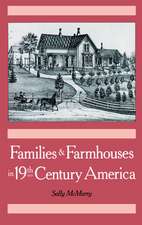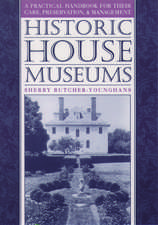Japanese Homes and Their Surroundings: Tuttle Classics
Autor Edward S. Morseen Limba Engleză Paperback – 15 aug 2007
Morse's publication is an idea book par excellence … Japanese Homes and Their Surroundings is likely to continue to be a valued resource for some time to come."—David and Michiko Young
First published in 1886, this classic review of the Japanese house and garden remains an authoritative description of the architecture of the traditional Japanese home. The work of Edward S. Morse, a groundbreaking and imaginative inventor, academic, author and museum curator, this edition of Japanese Homes and Their Surroundings features an introduction by David and Michiko Young placing the book in its historical context and explaining its continued relevance.
Containing over 300 detailed illustrations and revealing important historical and cultural sources, Japanese Homes and Their Surroundings is a time-tested resource for architects and landscape designers alike. Chapters include:
First published in 1886, this classic review of the Japanese house and garden remains an authoritative description of the architecture of the traditional Japanese home. The work of Edward S. Morse, a groundbreaking and imaginative inventor, academic, author and museum curator, this edition of Japanese Homes and Their Surroundings features an introduction by David and Michiko Young placing the book in its historical context and explaining its continued relevance.
Containing over 300 detailed illustrations and revealing important historical and cultural sources, Japanese Homes and Their Surroundings is a time-tested resource for architects and landscape designers alike. Chapters include:
- House Construction
- Carpenters' Tools and Appliances
- City and Country Houses
- Tearooms
- Portable Screens
- Household Shrines
- Vestibule and Hall
- Flowers
- Bridges
- Views of Private Gardens
- Houses of the Aino
| Toate formatele și edițiile | Preț | Express |
|---|---|---|
| Paperback (1) | 421.07 lei 6-8 săpt. | |
| Taylor & Francis – 3 mar 2016 | 421.07 lei 6-8 săpt. | |
| Hardback (1) | 1339.62 lei 6-8 săpt. | |
| Taylor & Francis – 23 mar 2005 | 1339.62 lei 6-8 săpt. |
Din seria Tuttle Classics
-
 Preț: 69.15 lei
Preț: 69.15 lei -
 Preț: 126.03 lei
Preț: 126.03 lei -
 Preț: 79.91 lei
Preț: 79.91 lei -
 Preț: 149.46 lei
Preț: 149.46 lei -
 Preț: 175.57 lei
Preț: 175.57 lei -
 Preț: 115.86 lei
Preț: 115.86 lei - 17%
 Preț: 47.19 lei
Preț: 47.19 lei - 20%
 Preț: 136.28 lei
Preț: 136.28 lei - 17%
 Preț: 77.93 lei
Preț: 77.93 lei - 16%
 Preț: 74.15 lei
Preț: 74.15 lei -
 Preț: 97.18 lei
Preț: 97.18 lei - 39%
 Preț: 80.14 lei
Preț: 80.14 lei -
 Preț: 98.06 lei
Preț: 98.06 lei - 15%
 Preț: 87.83 lei
Preț: 87.83 lei -
 Preț: 108.82 lei
Preț: 108.82 lei -
 Preț: 58.12 lei
Preț: 58.12 lei - 15%
 Preț: 59.44 lei
Preț: 59.44 lei - 15%
 Preț: 59.98 lei
Preț: 59.98 lei -
 Preț: 71.74 lei
Preț: 71.74 lei -
 Preț: 93.31 lei
Preț: 93.31 lei - 15%
 Preț: 48.95 lei
Preț: 48.95 lei - 21%
 Preț: 133.07 lei
Preț: 133.07 lei - 21%
 Preț: 134.74 lei
Preț: 134.74 lei -
 Preț: 63.77 lei
Preț: 63.77 lei -
 Preț: 108.55 lei
Preț: 108.55 lei -
 Preț: 52.84 lei
Preț: 52.84 lei -
 Preț: 222.77 lei
Preț: 222.77 lei -
 Preț: 36.49 lei
Preț: 36.49 lei - 27%
 Preț: 75.23 lei
Preț: 75.23 lei -
 Preț: 52.99 lei
Preț: 52.99 lei -
 Preț: 157.13 lei
Preț: 157.13 lei
Preț: 81.81 lei
Nou
Puncte Express: 123
Preț estimativ în valută:
15.66€ • 16.29$ • 12.93£
15.66€ • 16.29$ • 12.93£
Carte indisponibilă temporar
Doresc să fiu notificat când acest titlu va fi disponibil:
Se trimite...
Preluare comenzi: 021 569.72.76
Specificații
ISBN-13: 9784805308899
ISBN-10: 4805308893
Pagini: 416
Dimensiuni: 130 x 203 x 29 mm
Greutate: 0.43 kg
Editura: Periplus Editions (HK) Ltd.
Colecția Tuttle Publishing
Seria Tuttle Classics
Locul publicării:Japan
ISBN-10: 4805308893
Pagini: 416
Dimensiuni: 130 x 203 x 29 mm
Greutate: 0.43 kg
Editura: Periplus Editions (HK) Ltd.
Colecția Tuttle Publishing
Seria Tuttle Classics
Locul publicării:Japan
Notă biografică
Edward S. Morse ( 1838-1925), American zoologist, academic, author, museum curator, and imaginative inventor was born in Portland, Maine, the son of a Christian preacher. After an early start as a mechanical draftsman, where he developed a talent for making detailed drawings, he embarked on an academic career in zoology, attracting the attention of Charles Darwin for his discovery that brachiopods are worms rather than mollusks. A visit to Japan in 1877 in search of coastal brachiopods led to an appointment at the newly opened Tokyo Imperial University, where he taught zoology and biology. He opened the study of archaeology and anthropology in Japan with his discovery of the Omori Shell Mounds near Tokyo, and his research on material culture. While in Japan, he authored Japanese Homes and Their Surroundings, illustrated with his own line drawings, and assembled a collection of over 5,000 pieces of Japanese pottery. He also helped develop the Japanese Imperial Museum. On his return to the US in 1880, he took up his life's work as director of the prestigious Peabody Museum in Salem, Massachusetts, and as Keeper of Pottery at the Museum of Fine Arts in Boston. Towards the end of his long career, he was awarded the Second Degree Order of the Sacred Treasure and the Order of the Rising Sun by the Japanese government.
David and Michiko Young have conducted research on Japanese aesthetics for many years. David Young was born in the United States and spent his childhood in Sierra Leone, West Africa. After obtaining his Ph.D. from Stanford University, he taught anthropology at the University of Alberta in Canada before moving to Japan to continue teaching. Michiko (Kimura) Young was born in China and raised in Japan. After graduating from Kyoto Gaidai University, she moved to the United States and then to Canada, where she worked for many years in the international affairs office at the University of Alberta. The Youngs are now retired in the Rocky Mountains of British Columbia. Together they have authored An Introduction to Japanese Architecture (Periplus Editions, 2004), The Art of the Japanese Garden (Tuttle Publishing, 2005), and The Art of Japanese Architecture (Tuttle Publishing, 2007).
David and Michiko Young have conducted research on Japanese aesthetics for many years. David Young was born in the United States and spent his childhood in Sierra Leone, West Africa. After obtaining his Ph.D. from Stanford University, he taught anthropology at the University of Alberta in Canada before moving to Japan to continue teaching. Michiko (Kimura) Young was born in China and raised in Japan. After graduating from Kyoto Gaidai University, she moved to the United States and then to Canada, where she worked for many years in the international affairs office at the University of Alberta. The Youngs are now retired in the Rocky Mountains of British Columbia. Together they have authored An Introduction to Japanese Architecture (Periplus Editions, 2004), The Art of the Japanese Garden (Tuttle Publishing, 2005), and The Art of Japanese Architecture (Tuttle Publishing, 2007).
Cuprins
CHAPTER I. THE HOUSE. CHAPTER II. TYPEOF HOUSES. CHAPTER III. INTERIORS. CONTENTS. CHAPTER IV. INTERIORS - (Continued). CHAPTER V. ENTRANCES AND APPROACHES. CHAPTER VI. GARDENS. CHAPTER VII. MISCELLANEOUS MATTERS. CHAPTER VIII. THE ANCIENT HOUSE. CHAPTER IX. THE NEIGHBOURING HOUSE.



















